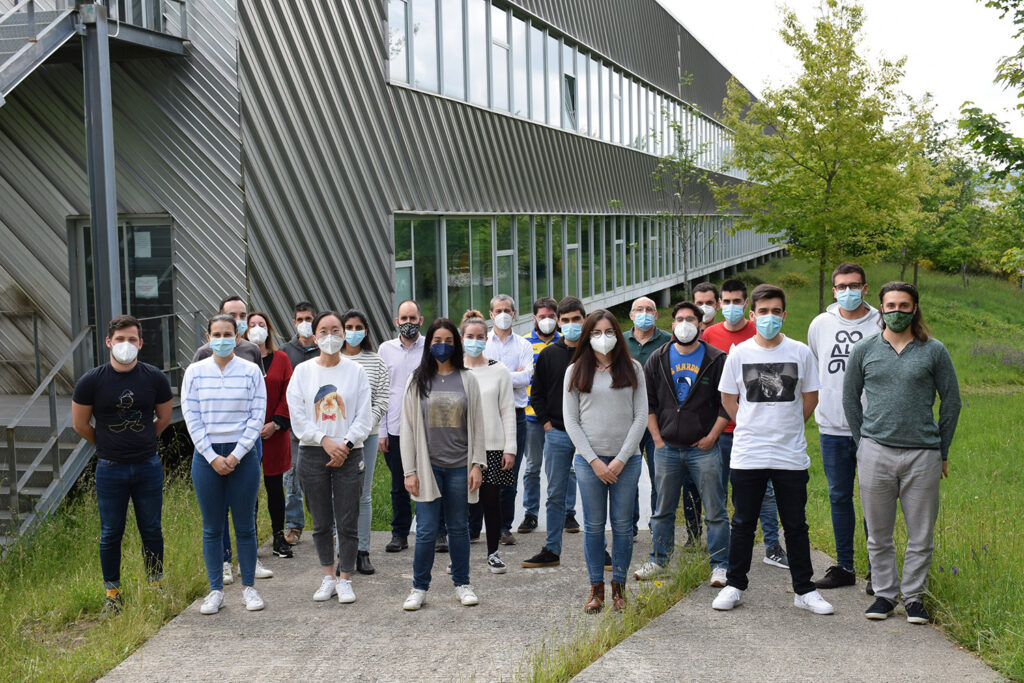
Pedro Arias Sanchez
Leader of MENELAOSNT Team at the University of Vigo | INSITU | Spain
Prof. Pedro Arias Sanchez is the leader of our team in the University of Vigo and the main supervisor of two of our Early-Stage-Researchers, Zhouyan Qiu and Rabia Rashdi. Since 1999, he has been working as a Lecturer in the Department of Natural Resources and Environmental Engineering of the University of Vigo, where he is Chair of Applied Geotechnologies Group from its creation in 2001. His main areas of research are close range photogrammetry, LiDAR, mobile LiDAR and mobile sensors among others. In addition, he has been working as a Scientific Collaborator at Ingenieria INSITU since 2009. Along the following lines, he will give us some insights into his on-going research activities at the University of Vigo and INSITU, the daily work with the ESRs, as well as her expectations for the second half of the Project we are just getting in. From MENELAOSNT COLCHIS Blog, we would like to thank him for these lines and we wish him, Rabia and Zhouyan all the best for their ongoing researches.

COLCHIS: Firstly, could you introduce yourself? What is your academical background and field of expertise? What is your current research focused on?
Pedro: I am a professor in Geotechnologies, with expertise in LiDAR sensors and point clouds management. My current research field is about mobile sensors, data fusion and the use of artificial intelligence for automatic processing of point clouds
COLCHIS: How did you and the Institution get on-board and what is your role within MENELAOSNT?
Pedro: We are part of MENELAOS_NT based on our previous relationship with the Managing Director of this project, Dr. Miguel Heredia. Our contact started more than 10 years ago. When the main idea of MENELAOSNT was designed, our activities were well connected with it and our connection and knowledge of the market through INSITU (Applied Geotechnologies Group spin-off), it seemed crucial for the project.
COLCHIS: The University of Vigo is one of the Campus of MENELAOSNT Innovative Training Network with two ESRs conducting their research and several ESRs’ secondments from other institutions held here. Could you give some insights into the research currently conducted at University of Vigo? How has been, so far, the experience with Rabbia and Zhouyan? How do you think this experience will contribute to their personal and professional development? How will the ESRs impact the research carried out at the University of Vigo?
Pedro: We are working on several research lines related to LiDAR sensors, automatic processing and integration with mobile platforms and other sensors of different nature. Rabia and Zhouyan started working with us in November´20. The experience has been very positive for us (both UVigo Group and INSITU), they are very well integrated. In my opinion, the possibility of working in a project as MENELAOSNT will be a key factor in their professional career, considering the international environment where they are working with secondments in different European countries, and background of making research connections between industry and University. The work of Rabia and Zhouyan connected with other current UVigo PhD students will allow us to improve our knowledge and advance in the state of the art of our research lines.
COLCHIS: The development of research activities with direct application to the Industry seems to be fundamental in the approach considered in the University of Vigo. In addition, the synergies between institutions and beneficiaries may be really positive in this case. What is your impression so far? What are your medium and long-term expectations?
Pedro: I absolutely agree, the connection between the industry and the research is a key component in the UVigo actions. We are working in a technological environment (inside of Engineering schools and very close to the industrial surroundings) and this position addresses our daily activities. Specifically, in relation to MENELAOSNT, this position gives a chance to Rabia and Zhouyan to acquire scientific training and industrial knowledge. This fact should increase the professional expectations after the project.
COLCHIS: It has been roughly one year since the starting of the research conducted by Rabia and Zhouyan. Undoubtely, COVID and the derived consequences have had an impact on our lives and activities, especially, for people moving to a new place from a different culture, working in a new environment and starting a new life during lockdown. How did they settle down? How are they doing? How is your experience working with them?
Pedro: The pandemic has affected our lives, what none of us could have imagined. All of us had to adapt to this “new normal” situation. Despite it, the adaptation was reasonably well. We were working in virtual mode the first time, and it did not help the integration in the group. However, the situation is improving every week and the work is normalized. In my opinion, they are fully integrated at this moment and my personal experience have been very positive so far. But frankly, I consider that better is yet to come.
COLCHIS: Finally, what do you think about International and European collaborative programs, such as MENELAOSNT? What role will they play in the future of research in the EU?
Pedro: Among all the EU initiatives for research and innovation funding, the pillar 1 for Excellent Science shows the most important support given to science, both in EU and globally. Pillar 1 aims to gather the talent between Marie Sklodowska-Curie actions (MSCA) projects and MENELAOSNT is a collaborative project included in the MSCA program. The collaborative programs are key in the progress of science. In my view, MSCA is addressed to gather the best international scientific talent and it will help to keep Europe in the cutting-edge scientific position.

Recent Comments